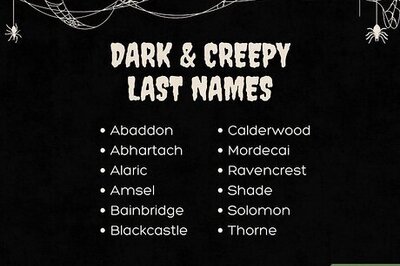
views
ANCHORAGE, Alaska: The first of 47 mushers and their teams of huskies competing in this year’s Iditarod Trail Sled Dog Race dashed off on their trek into the Alaska wilderness on Sunday, setting out on a course drastically altered by the coronavirus pandemic.
The starting line of the 2021 event was placed off-limits to the usual crowds of cheering spectators, and none are expected anywhere along the abbreviated route for this year’s 49th running of the world’s most famous sled-dog marathon.
Access to the starting area – a secluded spot at the edge of a frozen river in Willow, Alaska, about 75 miles north of Anchorage – was generally restricted to competitors, essential race personnel and media.
The staggered launch of the race began with Iditarod veteran Aaron Peck of Grand Prairie, Alberta, Canada, followed by rival teams charging out of the starting gate one-by-one every couple of minutes, amid sunny, unusually warm weather and a clamor of barking and yapping.
Temperatures at the site along the Deshka River climbed to 25 degrees Fahrenheit, the highest on record for an Iditarod start, but the mercury was expected to fall to between 5 and 10 degrees below zero as the day wore on, considered perfect conditions for the race, commentators said.
The usual Saturday ceremonial race kickoff in downtown Anchorage, Alaska’s largest city, was canceled altogether this year.
And there will be no finish line in Nome, the Bering Sea town that has long served as the end point for a race course that roughly follows the path of the legendary diphtheria serum run to Nome by dog sled teams in 1925.
Instead, this year’s race will run to an uninhabited checkpoint called Iditarod and an abandoned mining settlement named Flat, then turn around for a second leg sending mushers back to the starting line at the Deshka River in Willow.
The total distance is about 860 miles, roughly 100 miles shorter than the traditional route to Nome.
The coronavirus-altered route is designed to minimize contact with residents of the region. Even where the trail nears villages, checkpoints are isolated with restricted access. The route skips all the native Athabascan villages along the Yukon River and all the Inupiat villages on the Bering Sea coast.
The mountains of the Alaska Range will pose the greatest challenge to competitors this year.
“That’s kind of a critical portion of the race,” Rod Urbach, the Iditarod chairman, said earlier in the week. And this year, he noted, mushers will have to cross the Alaska Range twice, from the south and from the north.
Coronavirus aside, 2021’s highly competitive field includes 2018 champion Joar Leifseth Ulsom, a native Norwegian who lives full time in Alaska and is considered one of this year’s favorites.
He will be joined on the trail by three other returning champions – four-time winners Dallas Seavey and Martin Buser, and 2019 champion Pete Kaiser. Also slated to compete are the Iditarod’s top women – Aliy Zirkle, planning to retire after this year’s race, and Jessie Royer, who finished third the past two years.
The Iditarod, as it has every year, faced criticism from animal-rights activists condemning the event as inhumane, putting pressure on race sponsors. In January, Exxon Mobil said it was ending its longtime sponsorship after this year’s race.
The Iditarod has, nevertheless, gained some new sponsors and is drawing revenue from a subscription service that sends video directly to fans.
Read all the Latest News, Breaking News and Coronavirus News here

















Comments
0 comment